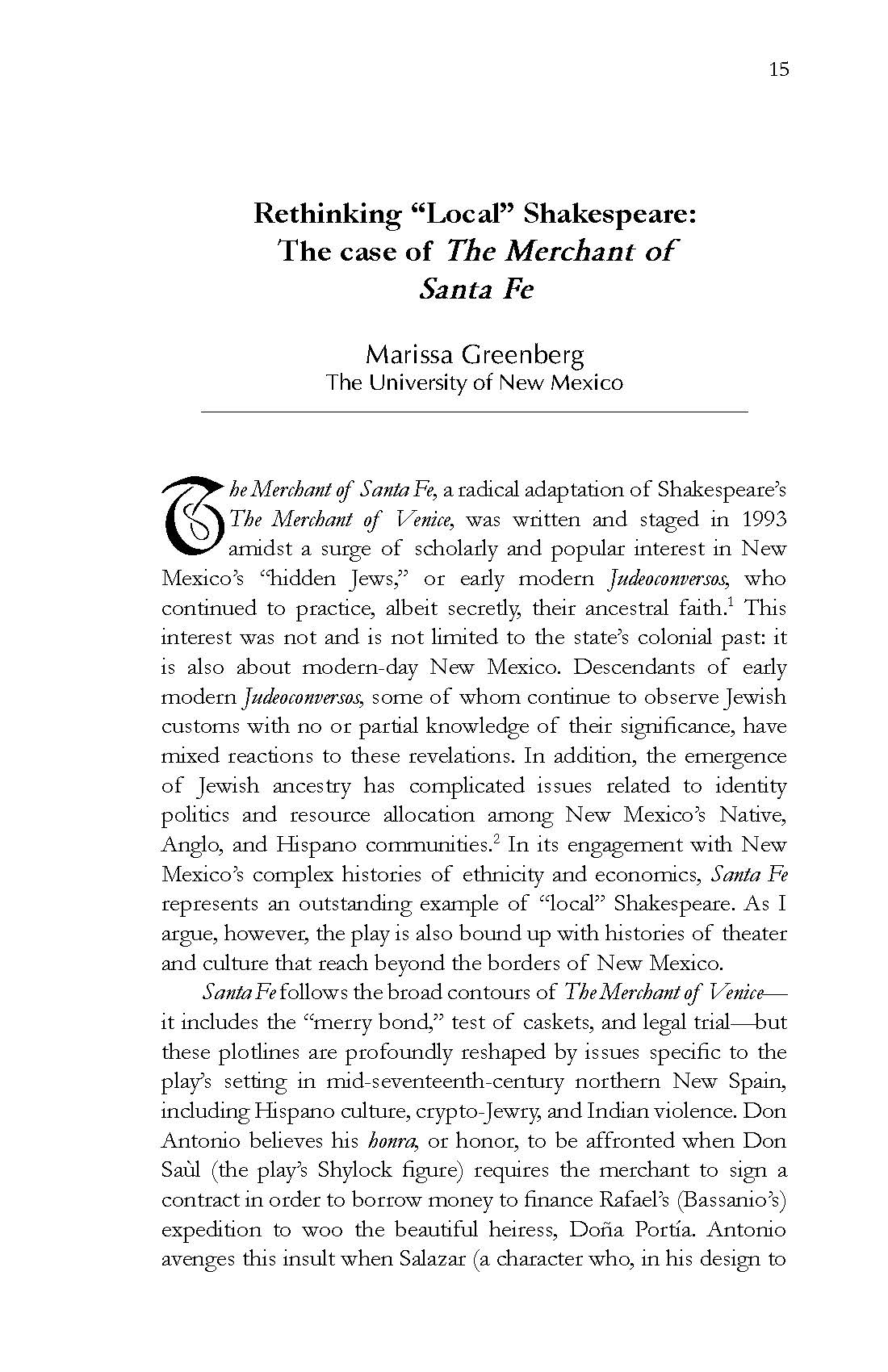Rethinking “Local” Shakespeare: The case of The Merchant of Santa Fe
Main Article Content
Abstract
The Merchant of Santa Fe, a radical adaptation of Shakespeare’s The Merchant of Venice, was written and staged in 1993 amidst a surge of scholarly and popular interest in New Mexico’s “hidden Jews,” or early modern Judeoconversos, who continued to practice, albeit secretly, their ancestral faith.1 This interest was not and is not limited to the state’s colonial past: it is also about modern-day New Mexico. Descendants of early modern Judeoconversos, some of whom continue to observe Jewish customs with no or partial knowledge of their significance, have mixed reactions to these revelations. In addition, the emergence of Jewish ancestry has complicated issues related to identity politics and resource allocation among New Mexico’s Native, Anglo, and Hispano communities.2 In its engagement with New Mexico’s complex histories of ethnicity and economics, Santa Fe represents an outstanding example of “local” Shakespeare. As I argue, however, the play is also bound up with histories of theater and culture that reach beyond the borders of New Mexico.
